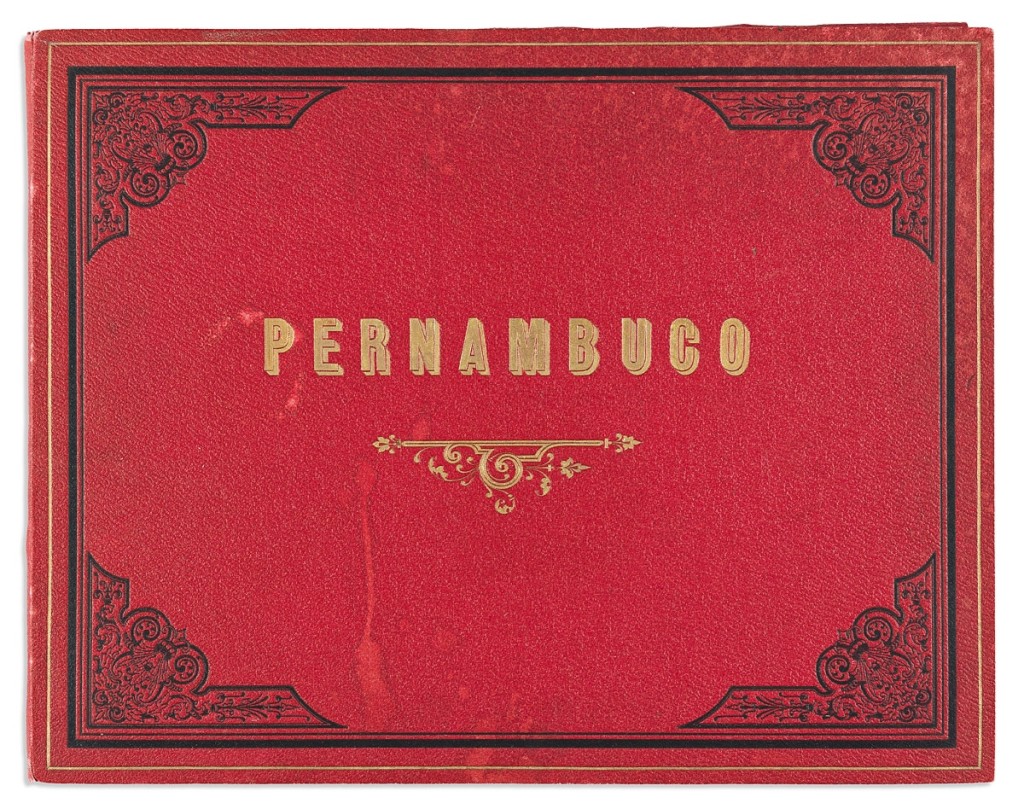
John James Audubon, “Carolina Parrot,” Plate 26, hand colored aquatint and engraved plate from Audubon’s Birds of America, 1828, sold for $137,000.
Review by W.A. Demers, Photos Courtesy Swann Galleries
NEW YORK CITY – Maps, atlases and books with maps, color plate and illustrated books, plus historical prints and drawings crossed the block at Swann Galleries on December 9. As expected, a hand colored aquatint and engraved plate by John James Audubon of the “Carolina Parrot,” plate 26, Birds of America, flew past its $80/100,000 estimate to alight at $143,000. Audubon’s masterpiece composition of the now-extinct species was on wove paper watermarked: “J Whatman/1830,” 38 by 25 inches sheet size, exhibiting full margins with a strong platemark, deemed by the auction house to be an excellent example with ideal cream paper patina, no tears or other faults.
A collection of scarce chromolithographs illustrating community life in the Pernambuco region of Brazil in the latter part of the Nineteenth Century brought $22,500. Without title, 53 chromolithographed plates presented landscape and town views, port scenes, farms, public squares and private villas in the state of Pernambuco, northeast Brazil.
Catalog notes say that Francisco Henrique Carls (born Franz Heinrich Carls) emigrated from Germany to Brazil in 1858 and established his lithographic studio there in the 1860s. Plate counts found in Carls’ albums vary, sometimes with as few as 20. This loose portfolio was a significantly large suite, the largest to come on the market in modern times. The collection was housed in a publisher’s oblong red cloth portfolio with white moiré paper flaps, 14 by 18 inches, ruled in gilt and black with stamped corner pieces and blocked lettering.
Early maps were among the main attractions in the sale. Leading them all was Cornelis Wytfliet’s Histoire Universelle des Indes Occidentales, 1607, consisting of three engraved architectural titles, 19 double-page engraved maps and a final leaf with woodcut printer’s device. A small folio, 11 by 8 inches, bound in later morocco-backed marbled boards, it sold for $16,250. Originally published in 1597, Wytfliet’s book was the first separate atlas devoted to the Americas and many of the fine maps are among the earliest printed of specific regions in North and South America.
Fetching $10,000 was William R. Morley’s Map of New Mexico a large, lithographed pocket map with original hand-color in outline. Measuring 25¼ by 25¾ inches overall, it folded into the publisher’s 12-month-format gilt-lettered cloth case with printed advertisement label pasted in. This, the first privately published map relating only to New Mexico, is especially good for boundaries of private land grants and military reservations. Many proposed routes of railroads are shown.

Francisco Henrique Carls, Album de Pernambuco e seus Arrabaldes, chromolithographed plates of landscape and town views, port scenes, farms, public squares and private villas in the state of Pernambuco, northeast Brazil, circa 1873, earned $22,500.
The same amount was attained by Abraham Ortelius’, Typus Orbis Terrarum, circa 1623, a double-page engraved map of the world with elaborate strapwork border design, 15¾ by 20½ inches.
An attractive example of one of the great large-scale maps of the early United States, one generally considered to be a primary guide in the planning of the Lewis and Clark expedition, was Aaron Arrowsmith’s A Map of the United States of North America Drawn from a Number of Critical Researches. The large, engraved case map in four sections printed on “J Whatman 1811” watermarked wove paper, had been dissected and mounted to original linen with contemporary printed bookseller’s labels of William Faden pasted to each verso. It brought $9,375.
An early edition of Johann Baptist Homann’s world atlas, complete as issued, with strong original hand coloring, was titled Neuer Atlas Bestehend in Einig Curieusen Astronomischen Mappen und Vielen Auserlesenen Allerneuesten Land-Charten über die Gantze Welt. It carried a hand colored engraved allegorical frontispiece, title-page with engraved world map device, contents list and 45 double-page engraved charts and maps in original hand colors. The folio measuring 20½ by 12½ inches went out at $8,450.
Another natural history highlight in the sale was Frederick William Beechey et al, The Zoology of Captain Beechey’s Voyage; Compiled from the Collections and Notes Made by Captain Beechey, the Officers and Naturalist of the Expedition, During a Voyage to the Pacific and Behring’s Straits Performed in His Majesty’s Ship Blossom… in the Years 1825, 26, 27, and 28, 1839. In its 180 pages were 44 beautifully hand colored engraved plates of mammals, birds, fishes, crustaceans, reptiles and mollusks and other supporting plates. This important early reporting on exotic Pacific species, many newly discovered, and illustrated by a fine collection of plates after Edward Lear, Johann Christian Zeitter, George Brettingham Sowerby and James De Carle Sowerby went out at $10,000.
Prices given include the buyer’s premium as stated by the auction house. For additional information, 212-254-4710 or www.swanngalleries.com.











